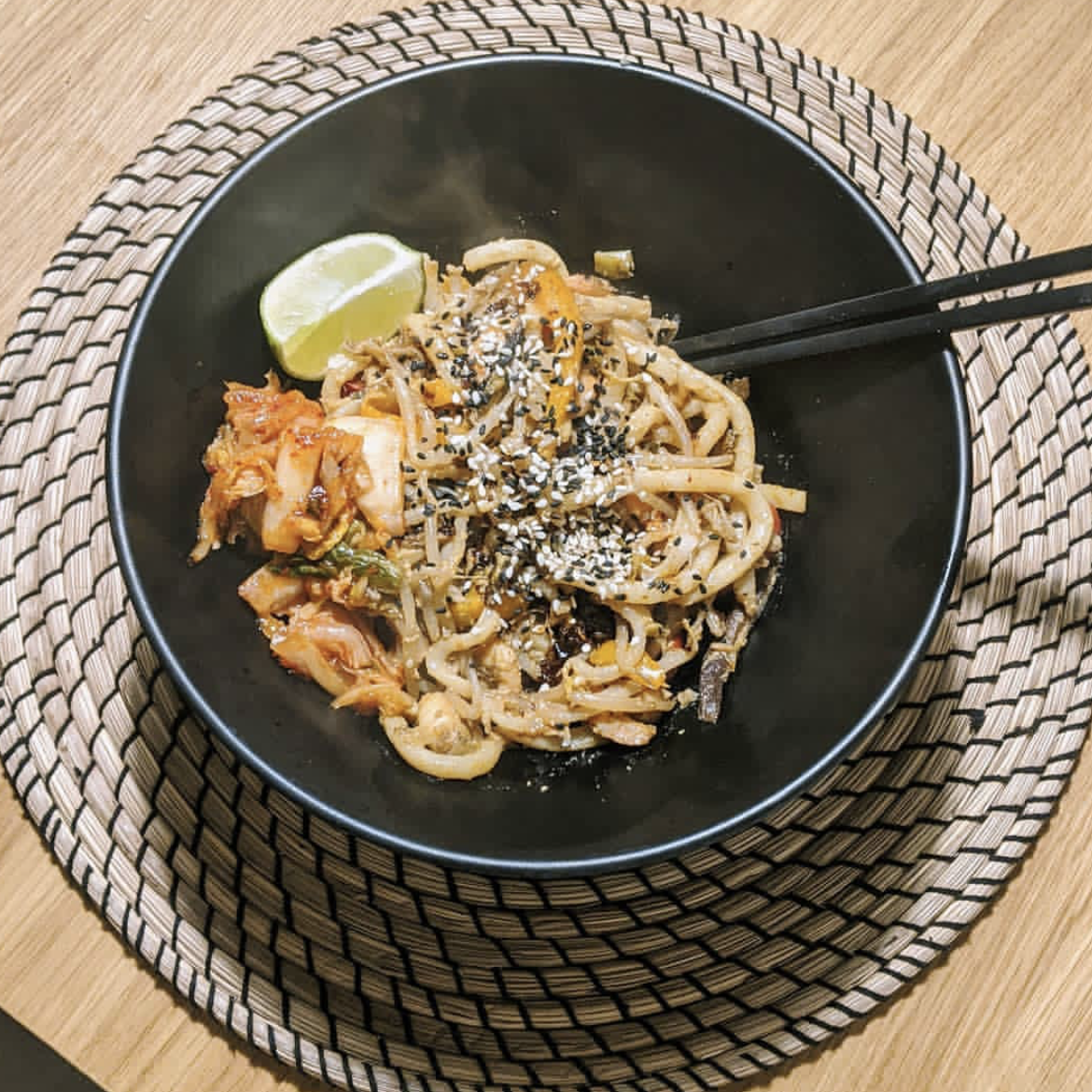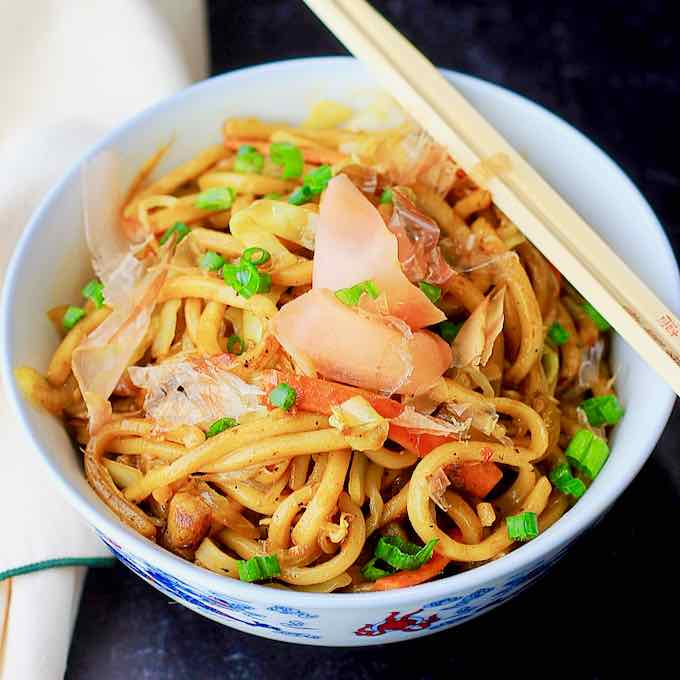Yaki udon is a Japanese stir fry dish made up of thick, smooth, white udon noodles mixed with soy sauce, meat, and vegetables. It is similar to yakisoba, which uses soba noodles to employ the same stir fry technique. Yaki udon is relatively straightforward to make. It is famous as a staple of Japan’s izakaya, or pubs, often eaten as a late-night snack.
It emerged after the Pacific War from Kokura, in southern Japan. The widely accepted story about how the dish was created goes back to when food was scarce, just after World War II. There are few more universally adored traditional Japanese dishes than Japanese udon noodles.
One of the three main types of noodles eaten in Japan (alongside soba and ramen), udon noodles’ main ingredients are wheat flour, salt, and water. During preparation, they become thick and chewy in texture. In addition to being an easy-to-use product for home-cooked meals, there are specialty udon bars and udon restaurants in Japan and elsewhere.
Japanese Yaki Udon
- Author: Romae Chanice Marques
- Recipe Category: Main Dish / Snacks
- Cuisine: Japanese
Udon noodles can be served in a variety of ways, the most common being a hot noodle soup where prepared udon noodles are served in a savory broth with different meats and vegetable garnishes placed on top.
The whole preparation and cooking time is about 20 minutes. This recipe is suitable for at least 2 servings.

Photo credit: @sabina.eats / Instagram.com
Japanese Yaki Udon Ingredients
- 450g of frozen udon noodles
- 300g thinly sliced pork fillet
- 1 tsp sake
- 1 tsp soy sauce
- 1 tsp grated ginger
- 160g cabbage
- 1/4 carrot
- 1/2 large onion or 60g
- 1/4 green capsicum or 80g
- 1 tbs sesame oil
- 1 tbs soy sauce
- 1 tbs sugar
- 1 tbs oyster sauce
- 1 tbs sake
- 2 cloves garlic finely chopped
- 8g ginger finely chopped
- 1 tbs sesame oil
- Bonito flakes and red pickled ginger for garnish
Japanese Yaki Udon Instructions
Step 1: Thinly slice the pork fillet and put it in a mixing bowl. In the mixing bowl, add sake, soy sauce, and ginger to marinate the pork for 10 minutes.
Step 2: Cut all vegetables into bite-sized pieces and set aside. In a small bowl, add all the sauce ingredients (soy sauce, sugar, oyster sauce, sake, mashed garlic, and grated ginger) and set aside.
Step 3: Cook the udon noodles for a few minutes in boiling water, and then drain the cooking water. Heat the sesame oil over high heat in a large frying pan and add finely chopped garlic and ginger before flavoring.
Step 4: Add the filet of pork and cook until the color switches to a grayish color. Stir in the vegetables and fry for a few minutes. Stir in the udon noodles and toss them all together.
Step 5: Pour the sauce over the mixture and combine well.
Step 6: You can serve it with bonito flakes and red pickled ginger on a plate or on top.
Japanese Yaki Udon Additional Information
- Rice noodles range in shape and size but always consist of rice flour and water.
- You can also incorporate other ingredients, such as tapioca and cornstarch, to modify the texture and clarity of the noodles.
- It will take 20 minutes to make this dish.
- This recipe can feed two people.

Image source: 196flavors.com
About Japanese Yaki Udon Recipe
Rice noodles are common in Asia. You might have had them in your favorite Pho or Pad Thai bowl. In a serving of Pad See Ew, you will find its wider relative.
Udon noodles are often served hot in dashi-based soups with tempura shrimp. There are also usually fresh scallions, slices of fish cake, and marinated vegetables. You can also enjoy yaki udon with a variety of vegetables and meats. Like soba, you can also enjoy chilled udon noodles with a dipping sauce on the side.
Conclusion
If you want to learn how to cook basic Asian foods, start with rice noodles. Yaki udon is one of the best examples of an easy recipe you can try out at home. Click here for more international recipes.
Featured Image: @_______.shura._______ / Instagram.com, @nutribread / Instagram.com








